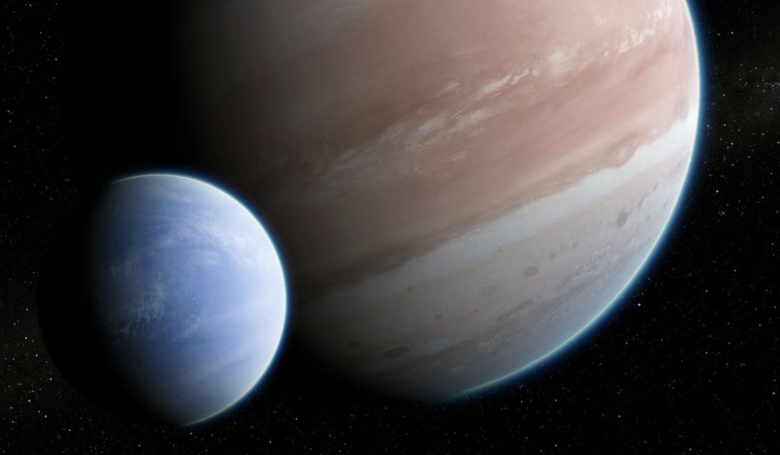The next holy grail in exoplanet detection, beyond finding an Earth 2.0 complete with liquid water and a substantial and non-toxic atmosphere, is undoubtedly to find the first confirmed exomoon. So, when news spread that such an object orbiting a Jupiter-sized planet had potentially been found late last year, excitement levels rose beyond that usually reserved for finding a ‘normal’ exoplanet (if such a thing exists). However, after further examination of the data by independent teams, the existence of the exomoon has now been put into question.
Named Kepler-1625b-i, the exomoon candidate was brought to the forefront of discoveries after a small team of scientists from Columbia University in the City of New York, who while searching through Hubble Space Telescope (HST) data, found evidence that a Jovian-sized gas giant called Kepler-1625b, was sending out signals akin to what would be expected if it had a large moon following it around.
These signals came in the form of transit timing variations (TTVs) and an apparent drop in stellar brightness after Kepler-1625b transited its host star. Transit-timing variation is pretty much what it sounds like – a method for detecting exoworlds by observing variations in the timing of a transit. It works by detecting the change in a planet’s orbital period caused by the gravitational pull of celestial bodies in a tightly packed system.
The gravitational pull causes one object to accelerate and another object to decelerate along its orbit and this subtle effect is known as TTVs. It provides an extremely sensitive method capable of detecting additional bodies in a system with masses potentially as small as our own planet and it can also be used to indirectly measure the mass of an exoplanet, or moon if it is large enough, in compact, multiple-body systems.
These key findings, said the authors, “suggests that the exomoon hypothesis is the best explanation for the available observations.” And what a find it would be. Although the field of exoplanet research started off slowly, scientists have since become very good at finding a myriad of different worlds in thousands of systems scattered throughout the galaxy. The next real breakthrough will surely be that of exomoons - we need only look at the moons in our own Solar System to see how they are the best hope we have of finding life in our own cosmic backyard.
Because of the consequence of such a find, others were quick to pull apart the data to see, or not see, the discovery for themselves. Once such team from Europe, including researcher René Heller and colleagues, backed up the findings by saying that “strong statistical evidence for a roughly Neptune-sized exomoon,” was in agreement with their analysis.
However, the support for declaring an official find stopped there and the paper also went onto say that the moon case rests too heavily on the modeling performed by Teachey and his team. As such, said Heller and team, although the evidence supports the moon theory, “it's too early to call this a discovery beyond all doubt”.
This sentiment was echoed via Teachey himself on Twitter, who said we've never called the detection “secure.” So did that mean the discovery was not real after all? “It’s cool they get the same solution,” said Teachey, but refuted? “Definitely not.”
The debate is still on. Since then another team have come forward to err on the side of caution and although some of their data corresponds with that of Teachey and team, they too suggest that “there is strong evidence against the moon,” says Laura Kriedberg and colleagues, who are all based at US institutions.
Its good news in some respect - all three papers find evidence for transit timing variations, for example, “the TTVs, which are a key piece of the moon hypothesis, have now been doubly validated,” said Teachey via Twitter. But then its not so good news in other areas as when it comes to the moon-like transit feature, two find evidence for it, while one does not.
Despite the implied negative responses, it's not all done and dusted and a bit of a hopeless cause, as rest assured there is no such thing as never say never in science, especially in astronomy. “We need more observations to determine whether these [findings] could be explained by an unseen, perturbing planet in the system, rather than the moon,” said Teachey. “I’d say that means the existence of this moon remains very much an open question.”











